Artist Interviews 2022
Jelbert Karami 
By Julia Siedenburg
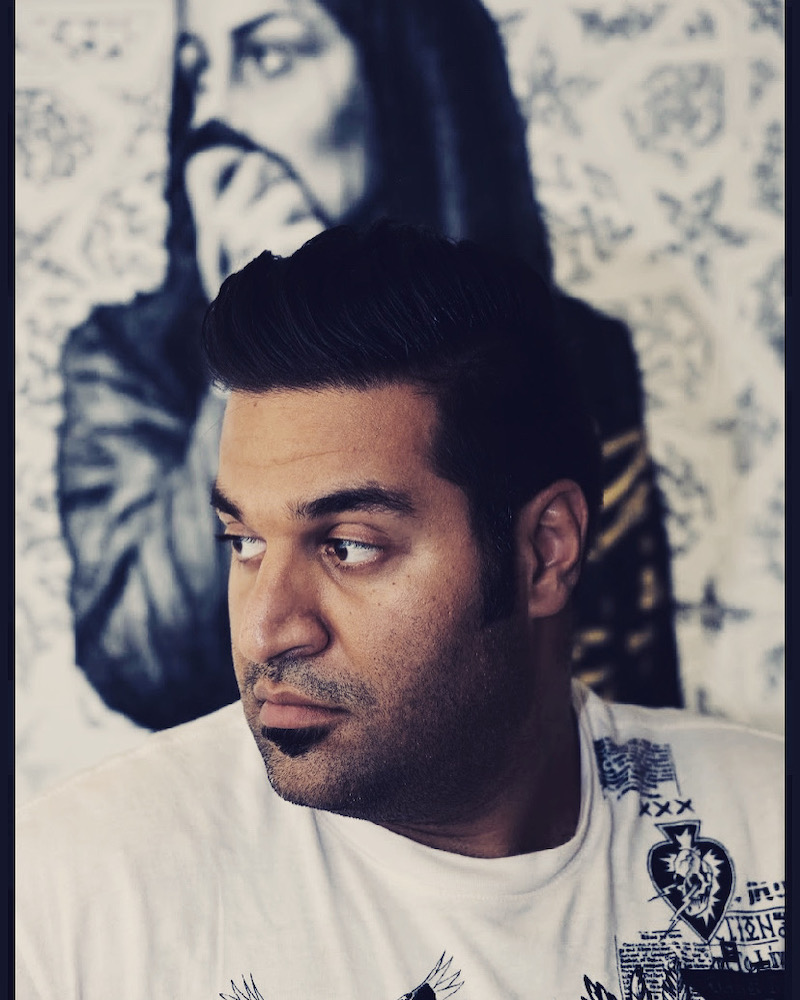
Jelbert Karami is an artist of many talents. His work a variety of collages, paintings, and sketch art. Besides his exquisite dry-point work and eye for detail, the native Iranian had also dedicated part of his life to teaching children. He is also a big advocate for women’s rights and after being inspired by the movement he created his emotional series “ Displaced Bodies and Hearts. I had the honor to chat with him in person and I knew he would be a great fit for Art Squat. So enjoy learning more about Mr. Karami, dear readers.
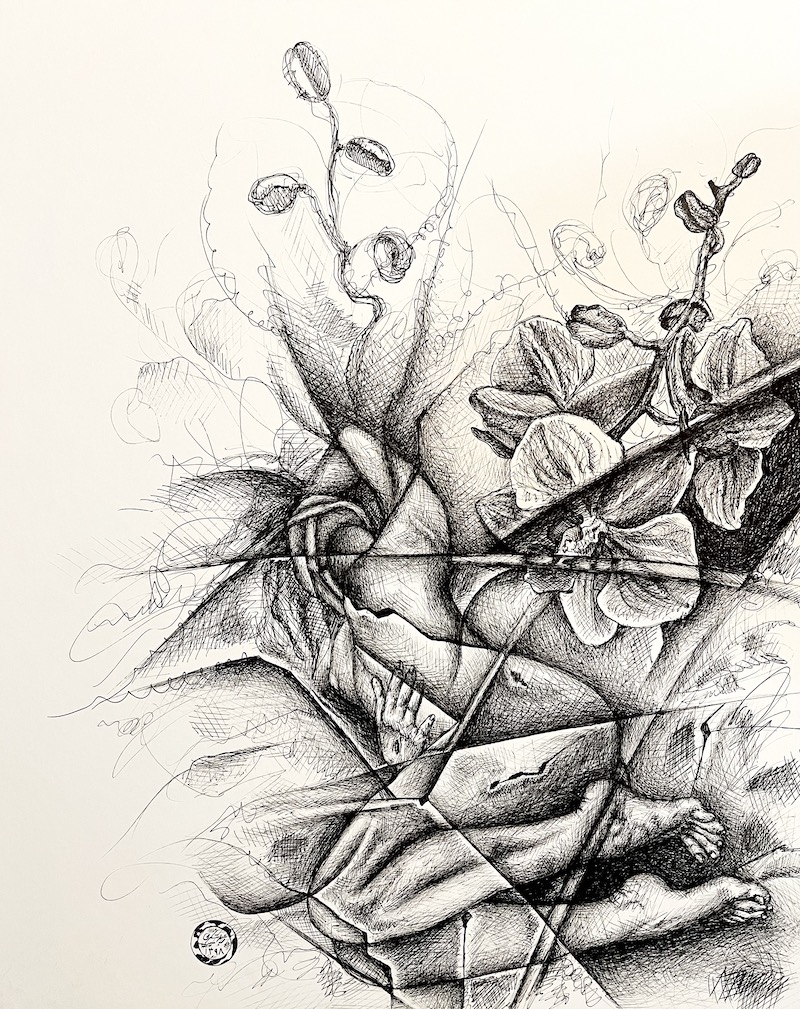
Why do you create the art that you do?
I create works of art to show my thoughts about the world around me. We live in a time when we can see human pain and suffering in different parts of the world, and as an artist, I am a product of my time. I show my sadness at the world's situation with my artworks. Even if the understanding of my works is ambiguous to some audiences; I will continue to create my artwork because it is a necessity for me, and my art is my language.
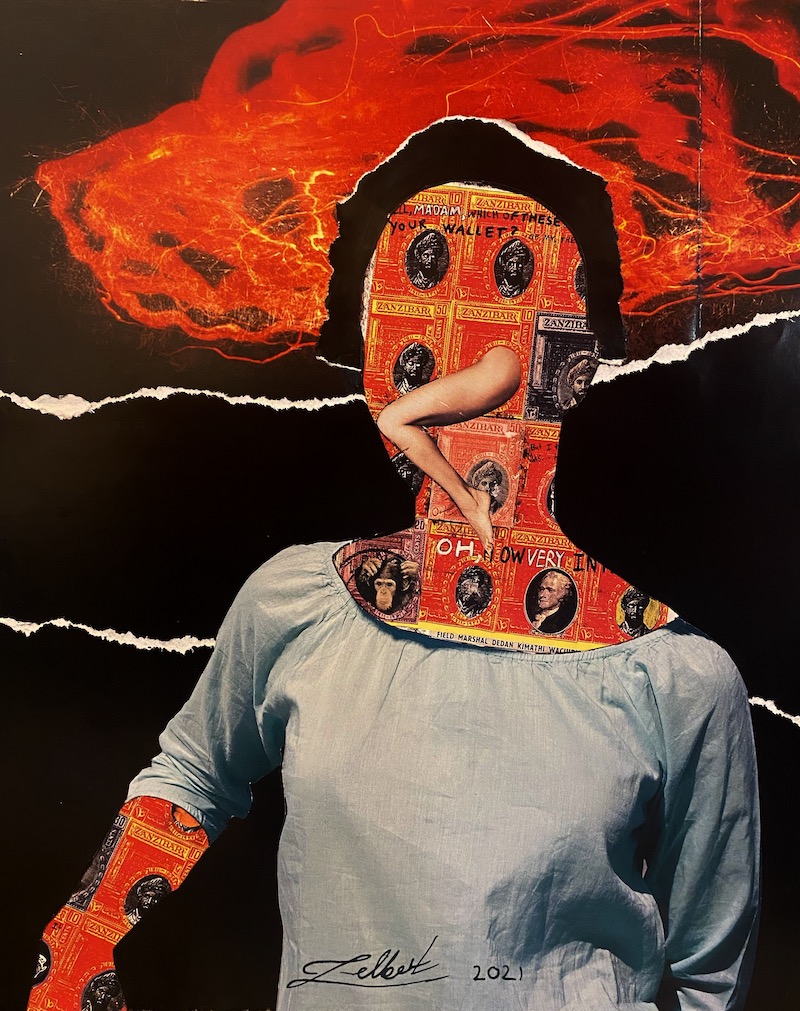
I first came across your art, at last, The Other Art Fair, and what made me stop was your talent for detail and simply the variety of your artwork. Each of your series is so vastly different in look. It may be the clean dry-point drawings of bottles, women, hands, and blankets, the colorful and creative collages, the fascinating Tree of Life collection, or your Displaced Bodies and Hearts series, to name a few. Which of your series is your favorite or most important, and why?
When I met you at The Other Art Fair in Los Angeles, we talked briefly about my works, which was an exciting conversation. I can't tell you which collection is more important or which one I'm more interested in because when I'm working, that piece is the most important to me. Each of these art pieces belong to a period of my life. It's a chain, and the different collections of work continue to build it. I work a little on collages; after a while, I stop and draw human figures, and then bottles, fabrics, and trees. But right now, my focus is on pen drawing and my subjects are human figures and fabrics.
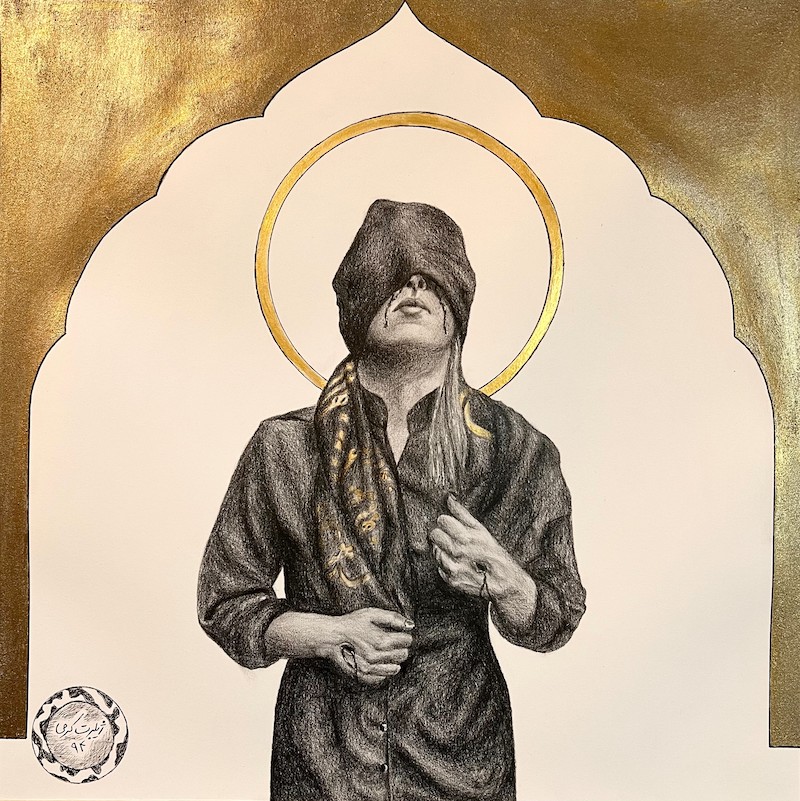
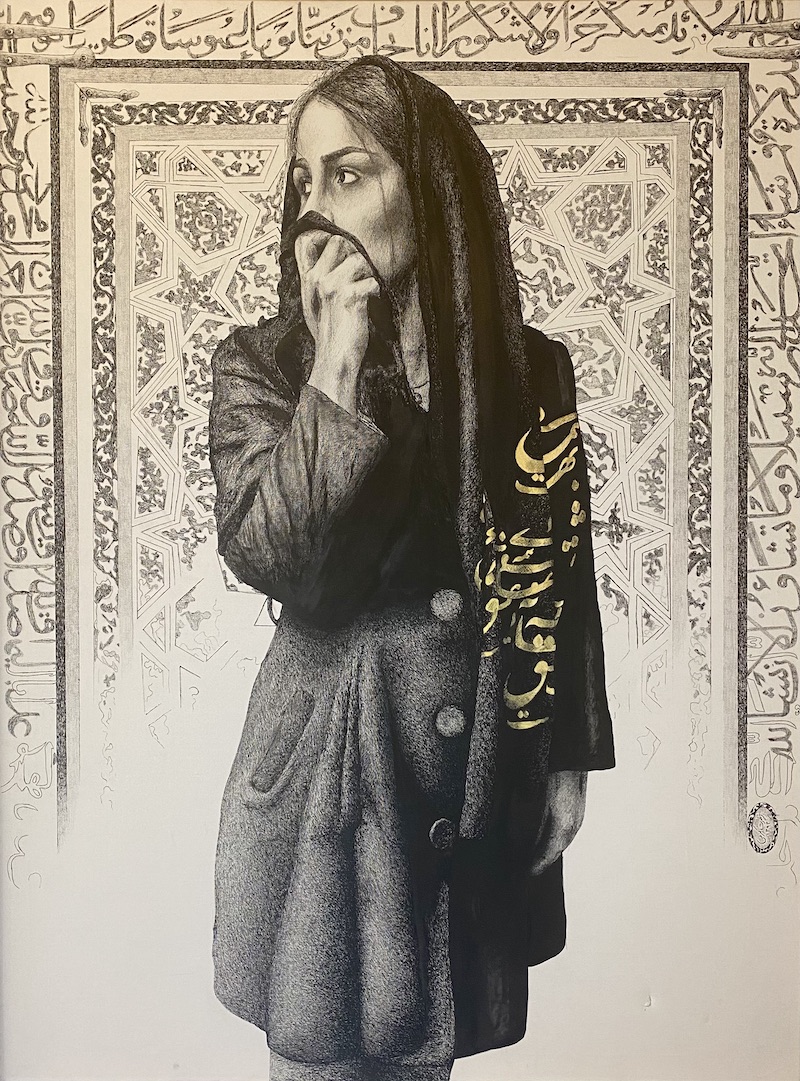
Your series "Displaced Bodies and Hearts" showcases a sadly very current and devastating theme: The oppression and suffering of women in Iran. This situation in your home country has always been a topic that was close to your heart,
even after moving away. These beautiful yet devastating images stand out with their colors or gold leaf detailing, but most of all, the fact that in most of your pictures, the faces of those women are covered, yet we know what they
are feeling without even needing to see them. Please tell us more about what this series means to you, and do you think painting the truth can help the fight against oppression and the wars that are currently raging?
Some concepts are complicated to explain, but these concepts must be understood. The Iranian women's movement has shown strength, solidarity, and authority to the world and it is inspiring. I am proud of this. This collection goes back to the past years when I was living in Iran and I was very close to people's concerns, especially women. Therefore, the faces are not clear, but at the same time, the concept of the painting is conveyed to the viewer. By using the hands in my paintings and the wounds, I want to show the pain and suffering of today's humans. There have always been hands and injuries in my works and faces with obscured with fabric. I once believed that visual arts do not have much impact in our contemporary world, but today I think that art can create change. Artists’ works can be a language of protest, and how the artist uses this language to protest is very important to influencing society.
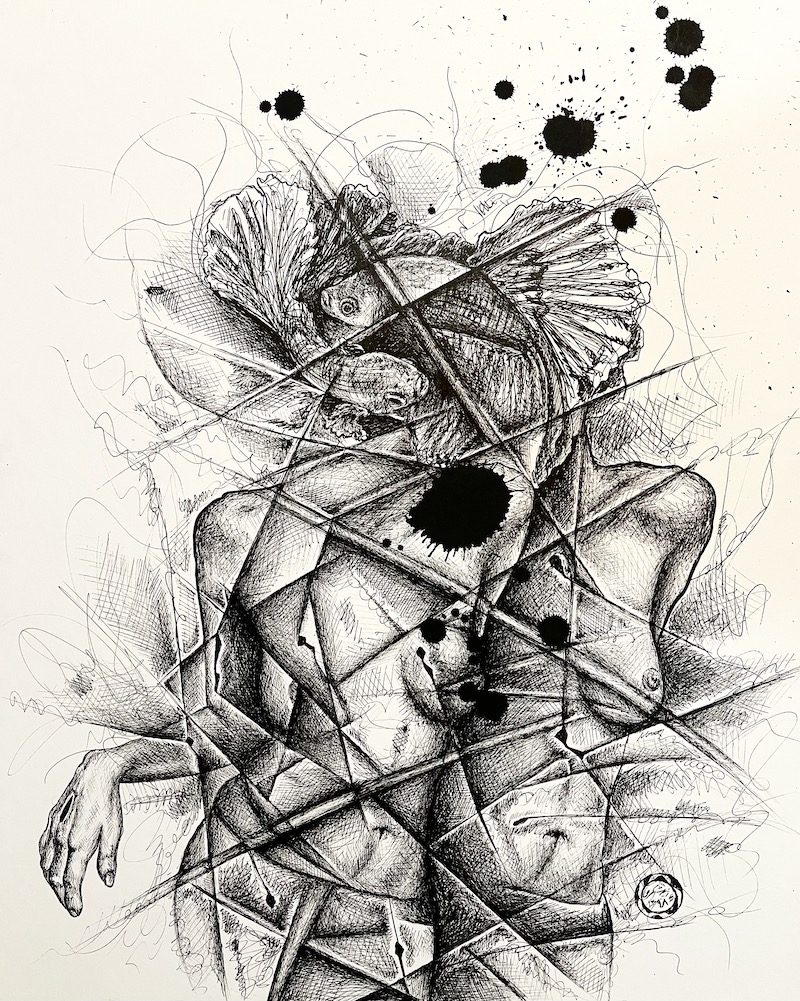
What inspired you to create the" Fish Dance" series?
I remember that as a child, there was a pond full of fish at my grandmother's house, and I would spend hours looking at the fish in that pond. The fish movements were very free and reckless like dancing. I still have this image in my mind, and I used the female figure and the fish to create this work. I wanted the female figure in this work to look free, like a fish.
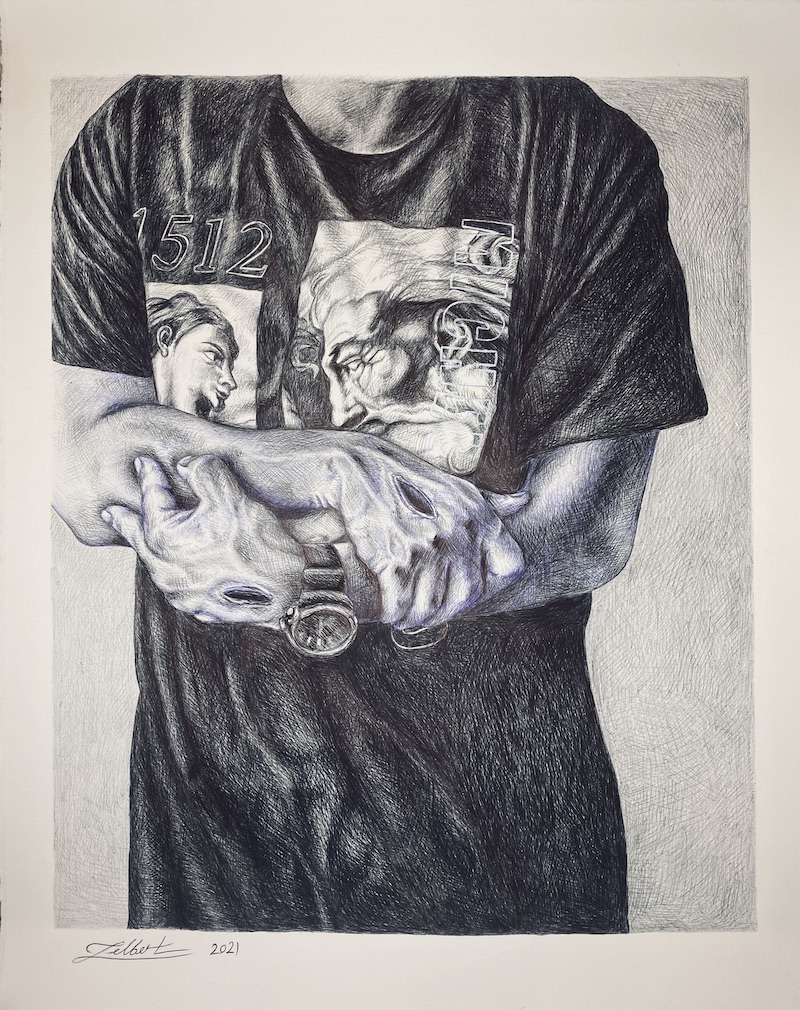
Some of your work, while seeming to be in black and white at first, does have some subtle color parts implemented in them, which only shows when you look at them more closely.
Why did you decide to use colors in some artworks and not in others, and what is your overall motivation for using them in the first place?
For me, a pencil or a black pen and white paper are enough to start my work and the use of color is minimal unless I feel the need to add more. I use colors carefully to show a concept more strongly. However, I am not fond of colors being seen as more potent than black because that is one of the most critical elements in my work. To show my feelings in my artwork, black color is enough in most cases. These are some of the unpredictable decisions that happen in the moment, what color to use with what intensity on my work. Although my pieces have details much of that may change at a moment’s notice and I may deviate from the original design I had. But this is very enjoyable for me. When I work, I welcome unexpected events in my artwork.

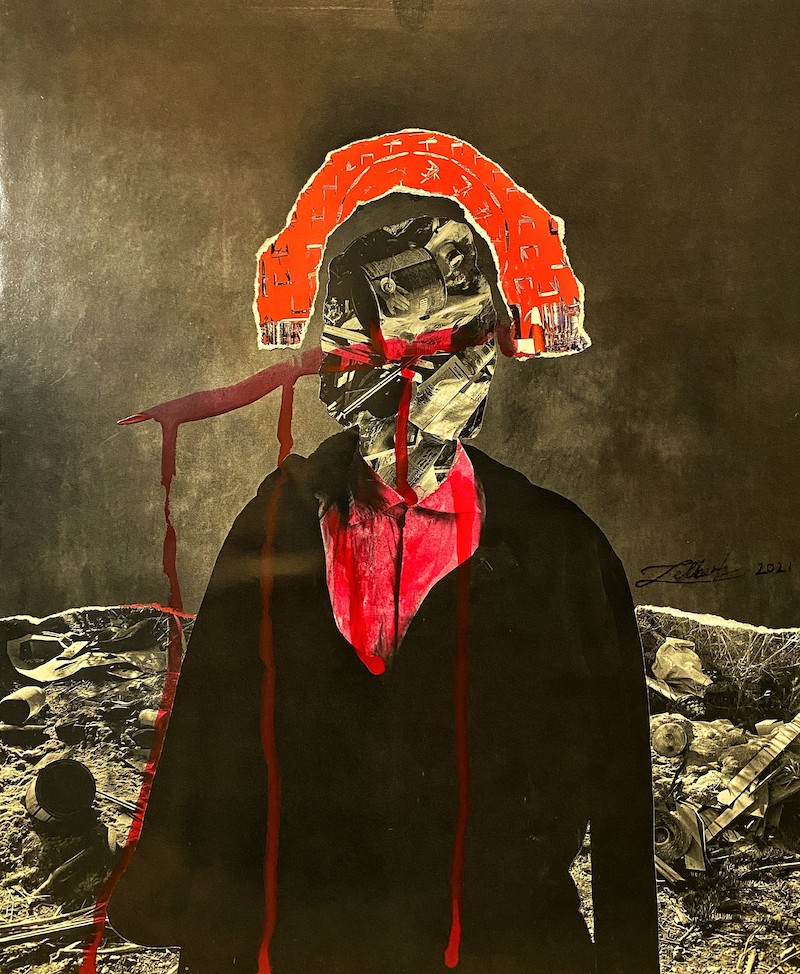
Tell us a bit about your upbringing and childhood in Tehran.
I was born in a Christian family in Tehran, and I have been interested in drawing with black pencil since I was a child. On the contrary, children like to paint with various colors. I remember all the money my parents gave me, I used to buy stamps and collect them, and I wanted to be a collector. I still have those stamp albums, and I still collect stamps. My interest in painting and art started when I learned more about the Bible's stories in the Catholic Church. And when I was ten years old, I got acquainted with the works of these artists like Caravaggio, Michelangelo, and Da Vinci, because the paintings of these artists were related to the Bible. As I grew older, I got acquainted with Picasso, Bacon, Chagall, and many other painters of different periods of art. My interest in seeing the pictures of paintings by various artists increased daily, making me interested in art history. Everything I am today comes from my childhood, and I am happy that I have dedicated my life to my art.
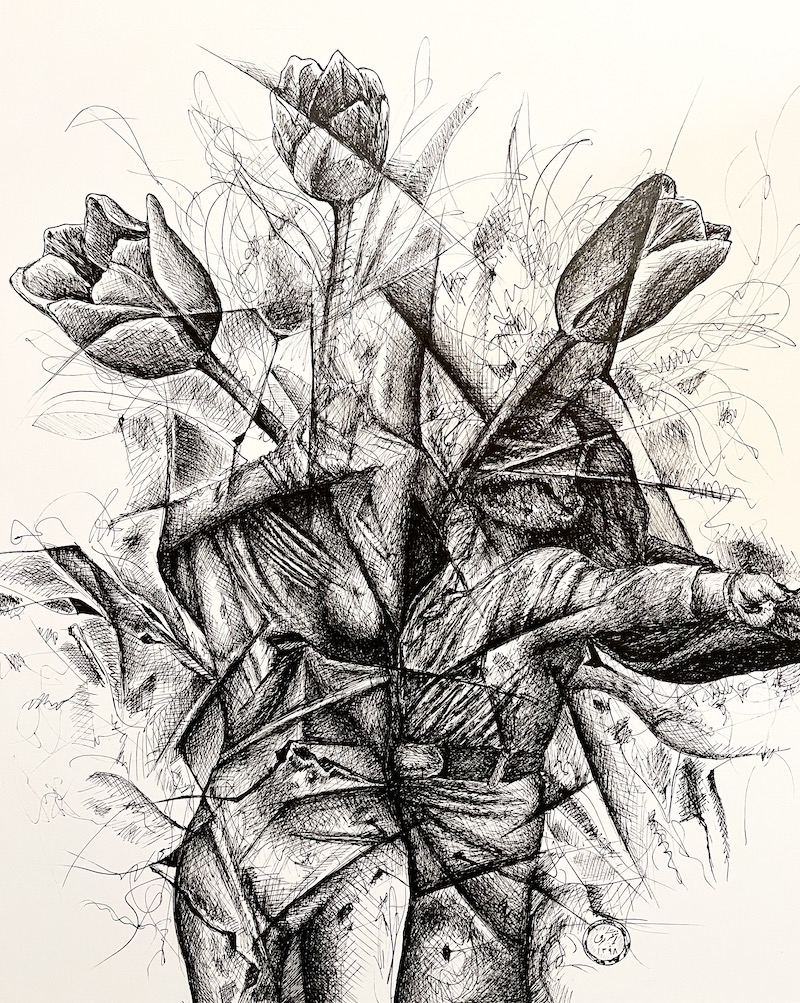

You became an art teacher in schools, holding workshops and spreading your knowledge to anyone who wanted to learn. How was that experience, and did you know something about your work through that?
It was an excellent experience, especially when I was holding classes or workshops with children. Children always make me learn more, especially when painting. They create work very freely and this makes me see the honesty in children's drawings. I always tried to paint freely like children in classes, but it was challenging. That freeness is something I still challenge myself to attain in my own practice. I have been away from teaching drawing and painting for several years and spend all my time creating my works. I hope to get another chance to hold workshops.
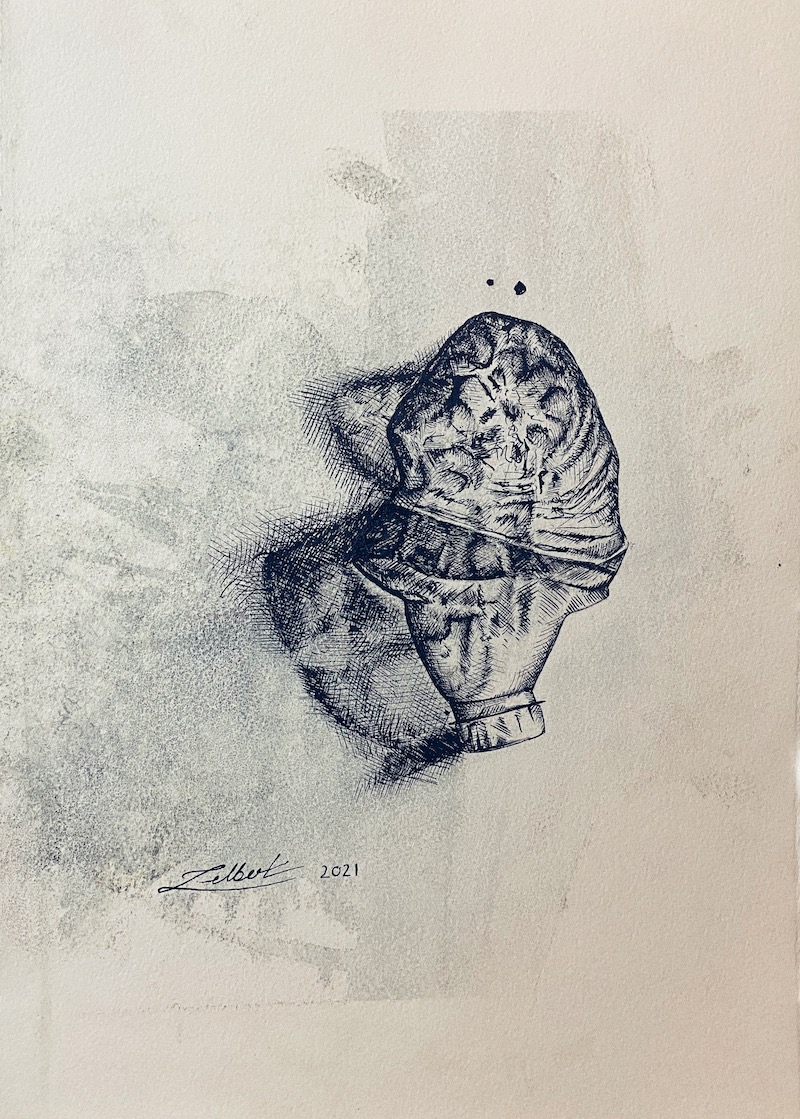
You began painting at 14 after seeing a painting at a local museum in Tehran. Please explain to us which piece changed you and how you started learning to paint.
A work by contemporary Iranian poet and painter Sohrab Sepehri, a piece belongs to the artist's collection of trees. Up until that moment I knew more about the works of European artists but from that day on I was excited to learn about the outcomes of Iranian and Middle Eastern artists. This painting inspired me to become a painter and I told my parents to enroll me in painting classes because I thought I had found my inspiration and goal. My parents didn't take my thoughts too seriously at first because they thought it was a momentary excitement but after a while, they enrolled me in a private visual arts school when they saw how determined I was.
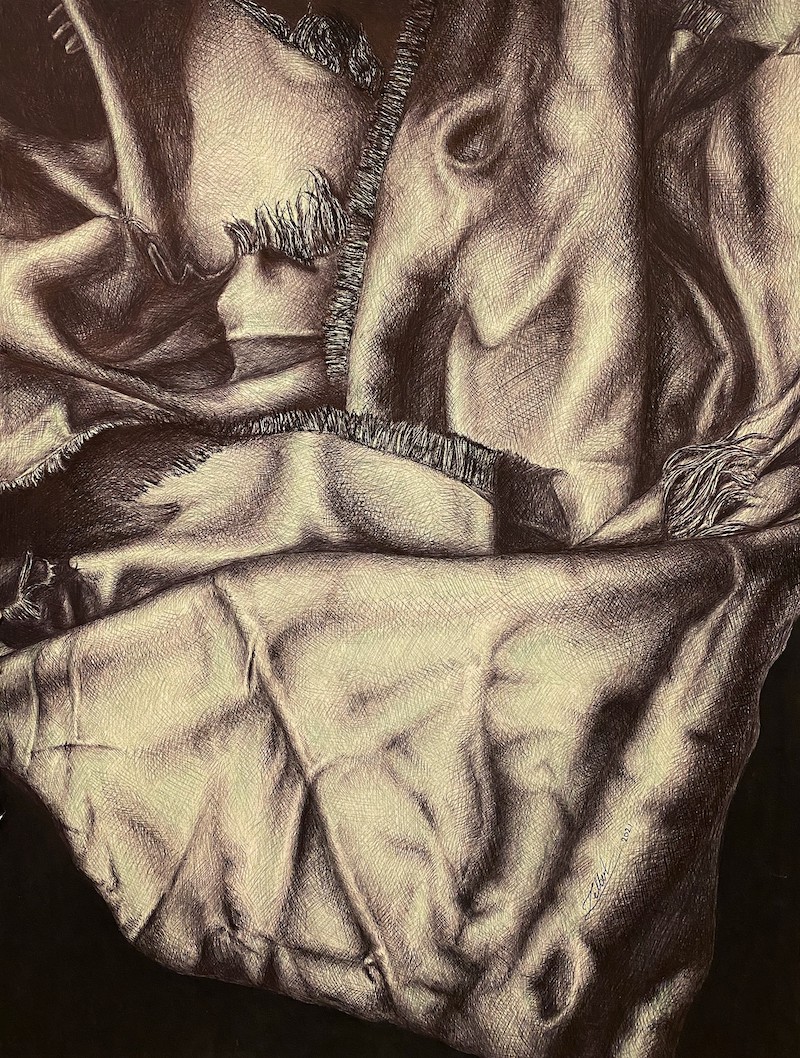
You left Iran in 2015, and after some time in Vienna, you came to the United States, where you have been living since 2016. Do you see a significant change in your artwork and your inspirations that your location and surroundings have drastically changed?
When I left Iran, I missed many things; my country, parents, and friends, and it was challenging to separate from everything I was attached to. When I arrived in Vienna, I experienced a new environment that was very different for me. However, it was an opportunity to visit artists, Museums/galleries, and see the works of art up close which was very motivated for me. Facing the new world impacted my artwork and my inspiration started to change in the new environment. I started experimenting with different materials in the United States in my painting. Looking back, I realize that these changes have led to progress and new experiences for me in my work.
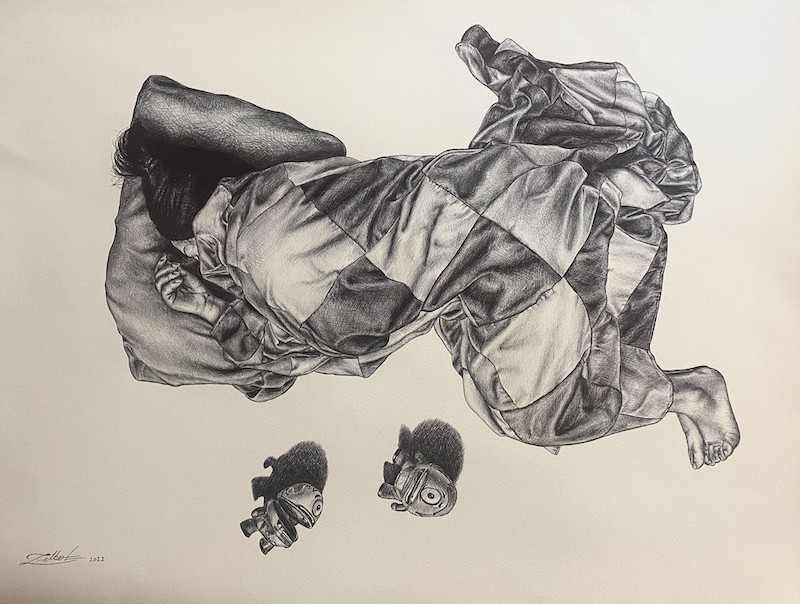
What is next for you? What are your plans for the future?
I am working on two collections and want to hold a solo exhibition to showcase the tree of life collection. In addition, I would like to do more etching next year and spend more time on printmaking.
|
|

